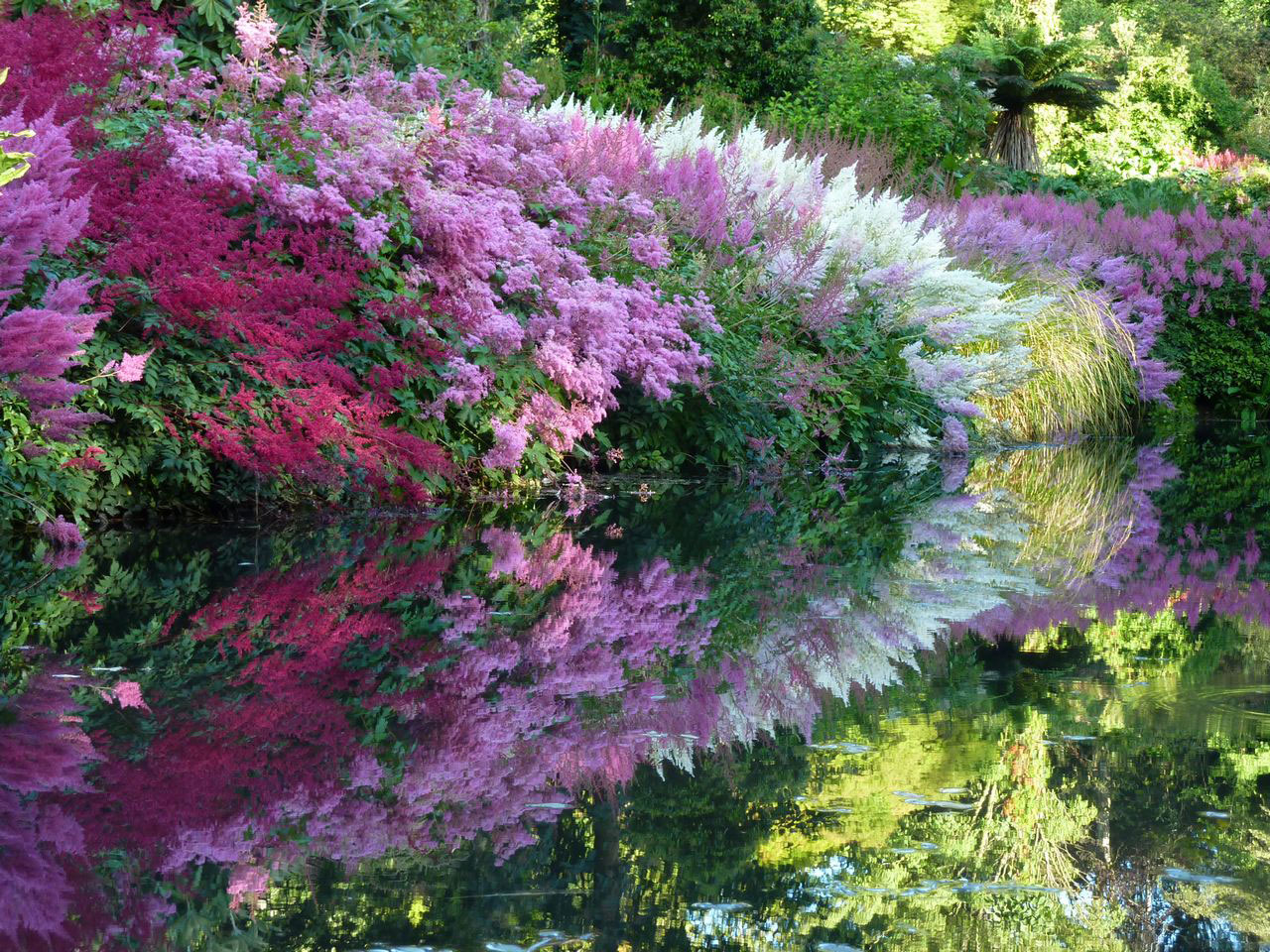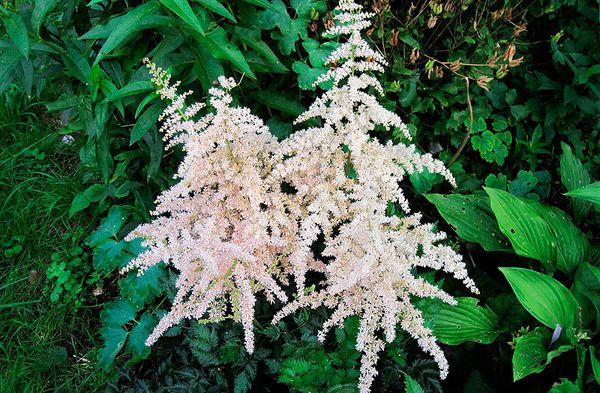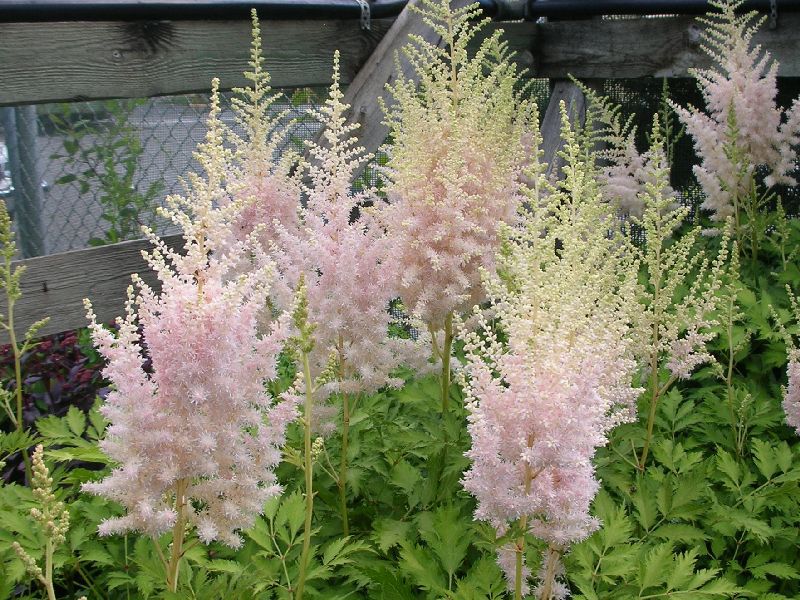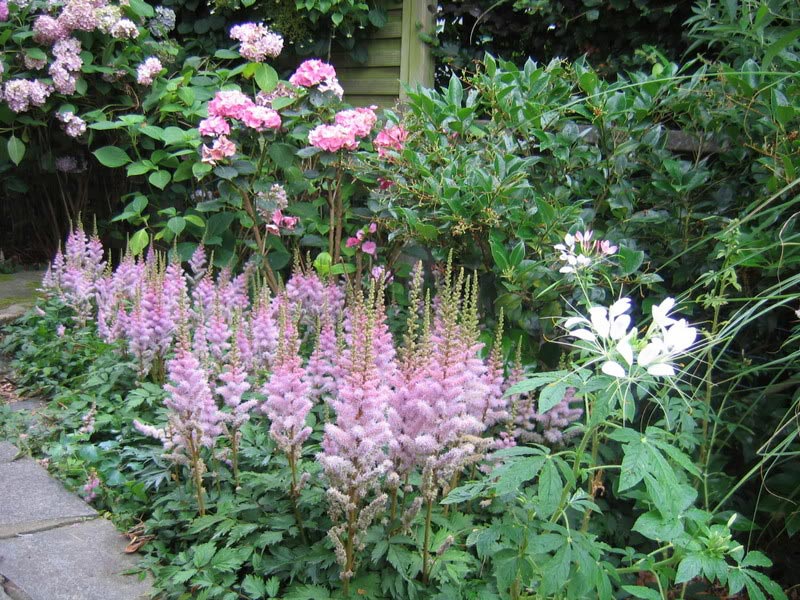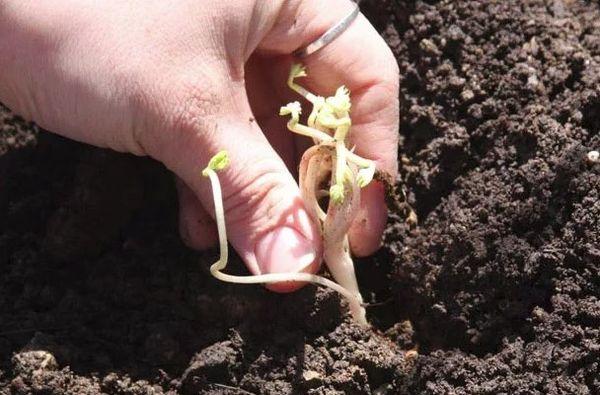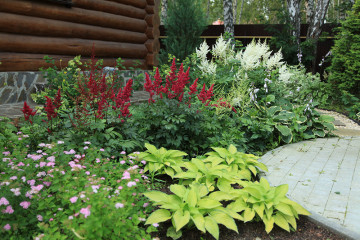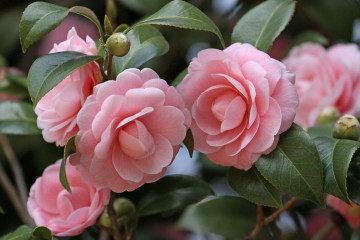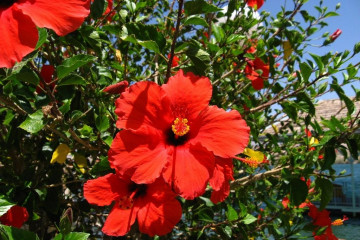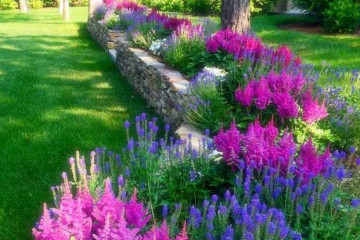Chinese astilba
Content:
Astilba chinensis is known for its decorative qualities and the ability to grow well in a small shade. It combines undemanding care and the ability to bloom luxuriously. If the gardener knows the characteristics of the various species and varieties, he will be able to choose the appropriate variety.
Chinese astilba
This flower is known for its lush flowering and unpretentious care. A large number of species and varieties have their own characteristics, allowing the gardener to choose the right variety.
Description of Chinese astilbe
The homeland of Chinese astilba is Northeastern China, Primorye, Amur Region and the southern part of the Khabarovsk Territory. Under natural conditions, this perennial plant can be found in deciduous forests.
Astilbe (in Latin "Astilbe") is a sprawling bush with flowers of pink, lilac or other shades that looks spectacular throughout the garden season.
The plant was discovered by Scottish botanist Lord Hamilton. The origin of the name in its edition sounds as follows: "A" means "negation", "stilbe" - "shine". He noticed that the petals of this flower do not have luster.
Another name is false spirea. The fact is that these two plants are similar to each other, so this name also gradually stuck.
Plant height can range from 15 to 200 cm. Small flowers are combined into inflorescences in the form of a panicle. Their length can be from 10 to 60 cm. Flowers can have different colors: pink, purple, red or white. They appear between June and August. When flowering ends, seed pods form in their place.
The leaves are large, delicate. They are located on reddish cuttings and look very impressive. Leaves can be burgundy, bronze or dark green.
Growing conditions
This plant is known for its resistance to excessive moisture and shade.
Before planting, the earth is carefully dug up, weeds are removed. It is recommended to fertilize the soil with compost, peat or rotted manure.
When choosing a site, there is no need for strong lighting. This plant grows well in the shade, but it should not be dense.
After planting, you need to take care of mulching. This can be done using small pebbles, sawdust, straw, and other similar materials. This will better retain moisture, prevent the flower from growing weeds next to it.
Astilba: varieties and types
Below is a description of the most popular varieties and types.
Pumila
The bush of this species is compact, its height is 50 cm. This astilbe is known for its long flowering period, which begins in July and ends in September. This variety is not only beautiful, but also known for its unpretentiousness and ability to withstand drought with ease. Astilba flowers of the Chinese Pumila have a delicate pink tint.They can sometimes be pure purple in color.
Milk End Honey
The flowering time of this species is July. It lasts for 30 days. The variety has delicate creamy white flowers. When the buds open fully, their color turns to pale pink. Panicles with flowers are up to 40 cm long.
Densely leafy bushes. Their height can reach 1 m, and their diameter is half a meter. On the leaves of a dark green color, you can see a pattern resembling marble veins.
This species grows well both in areas in the shade and in those that are brightly lit by the sun.
Purpurkerce
This bush differs from other species in height. It can grow up to one and a half meters in height. Astelba Purpurkertse blooms relatively late - from the second half of August to the end of September. This variety does not tolerate heat and drought, does not like intense sunlight. Therefore, when growing, it is important to provide a high-quality drainage system and regular watering.
Visions In White
This species is hybrid. Astilba Vision In White has bushes of medium height (from 40 to 70 cm). The variety is not spreading, the diameter of the bush does not exceed 30 cm. Dense inflorescences are white in color. The flowering period falls in the second half of the summer.
Leaves are densely dissected with a shiny surface. They are dark green with a bronze tint. This type is widely used to decorate borders and flower beds. In the latter case, the astilbe is placed in the foreground.
Dauria
This is a tall plant that can reach a height of 1 m. It has complex openwork leaves of a dark green color. Flowering begins in June and lasts until the end of July. Its duration is no more than 40 days. For this variety of astilba, according to the description, loamy soils are well suited.
Flowers can be pink, white or lilac. The variety prefers to grow in partial shade and is unpretentious to care for.
Visions In Pink
This hybrid variety has beautiful dense inflorescences of a pale pink hue. Dissected smooth leaves of a dark green color. Flowering occurs from July to August. Astilba rosea has bushes of compact size and medium height.
Purple Rhine
This species has powerful and large bright pink-lilac inflorescences. The time when they bloom is from June to July. The pyramidal bushes are compact in size. Leaves are complex-pinnate with a shiny dark green surface.
Arends
This name arose thanks to the German botanist G. Arends, who together with the French scientist A. Lemoile in the 20th century. brought out a group of popular varieties of astilba, which will be discussed below.
Amethyst
The shrub reaches a height of one meter. It is a sprawling flower, its width can reach 50-70 cm. The inflorescence is long and narrow, lilac or crimson in color. The flowering period of this plant is relatively short. The time when the panicles bloom begins in the last days of June and lasts for 30 days. Astilba Amethyst prefers to grow in partial shade. The variety is known for its high frost resistance.
Fanal
This plant is known for its unpretentiousness. The variety was bred in 1930. The name translates as "lighthouse light". It is due to the fact that Astilba Fanal has bright scarlet inflorescences that attract attention.
The shrub grows up to 60 cm. Astilba red loves the soil, which is well moisturized, and the presence of shade.
Garnet
This shrub is spreading with a dense crown of leaves. Astilba Pomegranate grows up to 70 cm. The leaves are dark green with a shiny surface. The plate has finely toothed edges. Loamy, slightly acidic, fertile soil is suitable for the variety.
Bright red buds spread a pleasant aroma around. Flowering occurs in July - August.
Diamond
This variety is known for its decorative qualities. The life time of astilbe Diamant is on average 5-7 years. The height of the bush is 90 cm, and the diameter is 40 cm.
The bright pink flowers do not exceed 0.5 cm in size. The time when they bloom lasts from June to September. During flowering, Astilbe Diamant emits a pleasant smell.
America
In this plant, the bushes reach 70 centimeters in height. Astilba America has high frost resistance. Light pink-purple inflorescences are collected in rhombic panicles. She has large, delicate leaves. Flowering time is from early June to late July. The variety is well suited for decorating places with partial shade.
Weiss Gloria
The shoots of the bush are thin and strong. The width of the bush is 50 cm, the height is no more than 75 cm. The leaves of astilbe Weiss Gloria have a soft green color in early spring. In the middle of summer, they darken and become denser. Large diamond-shaped inflorescences contain a large number of small creamy white buds.
Japanese
On the basis of this species, varieties were bred that have gained well-deserved popularity. One of them is Astilba Montgomery. The height of this sprawling bush is 50-80 cm. The red-brown inflorescences are diamond-shaped. The size of the bud does not exceed 5 mm, but a large number of them creates a feeling of density. The flowering time of this variety is from May to August.
These shrubs have a unique beauty, and each species and variety has its own decorative features. Such a wide variety will allow each grower to choose the most suitable option for growing.
